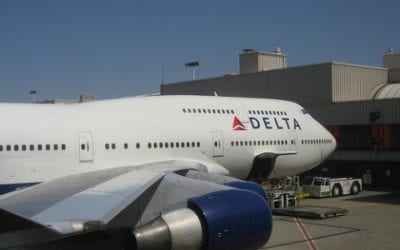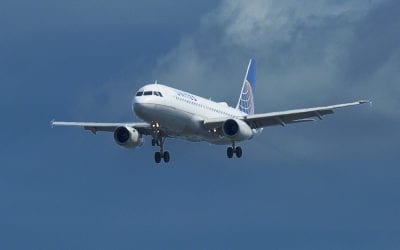The airline industry must hate its passengers. They make it difficult, if not nearly impossible, for travelers to comparison shop. And, they are making the travel experience as horrible as possible to generate more profits from extra fees.
Airlines do not want air travel buyers to have any idea of what others are charging. Delta Air Lines doesn’t want American Airlines flying between two cities where they have service to have any idea about what American might charge for the same flight. They certainly don’t want potential passengers to see what a low-fare airline like Spirit might charge for the same service.
There are lots of ways that airlines make price comparisons almost impossible for the average flier.
Airlines have broken their airfares into pieces. Today, they are selling what used to be bundled — baggage, seat reservations, a meal, pillows and blankets, maybe a movie. This “unbundling” was initiated in the days of high fuel prices and the excuse was that airlines had to do this to survive.
However, as fuel prices have dropped over the past year, the cost of flying has not. Despite the airlines’ claims that they only needed baggage fees and seat reservation fees to make up for higher fuel costs, reality proved that the airlines were lying. Today we know that these fees are added to airfares together with a slew of other fees to make the buying process more difficult.
Even simple connections that seem easy are fraught with complexity. Airfares vary somewhat across airlines based on whether or not a certain number of seats are sold. Then we throw in baggage fees. Airlines protest, saying that all the baggage fees are more or less the same — $25 for the first bag and $35 for the second. But that is a lie as well. There are variations on these baggage fees based on the type of credit card used to purchase a ticket. Other variations are based on the level of frequent flier program member a flier might be. And, of course, across airlines there are variations on this supposedly simple fee.
Airlines are also starting to charge for seat reservations; not all of them, only enough to create uncertainty and confusion. Looking at a seat map during the booking process is fruitless unless one is an elite-level flier. The basic passenger is manipulated by dishonest, deceptive and misleading seat maps that show more seats reserved than is actually the case. When confronted with this state of affairs, airlines claim that they are legitimately holding back seats for their frequent fliers. However, when elite fliers make up less than 10 percent of their fliers and they “hold” half of the seats on the plane for these fliers, the result can be abusive and misleading.
But, simply making seating charts misleading is not enough. The airlines again engage in creating a complex collection of prices that make comparison shopping impossible. Some passengers pay for seats. Others do not. Some have savings because of credit cards. Other do not. Some get free seats because a friend has a credit card. Others do not. Between all of the exceptions, a basic passenger has no hope but to be confused.
Plus, airlines do not tell passengers that there is no need to make a seat reservation, even in the most draconian of programs. Every passenger who has a ticket will get a seat, whether they have reserved one or not.
The solution to this problem of comparison shopping is simply to mandate that all prices charged by airlines, whether they be for airfare or ancillary fees, be made public and distributed through the entire ticketing network that serves the airlines. That way, new programs can be created to provide passengers shopping engines that will be able to handle today’s complex airline pricing world.
Passenger misery is being tested and calculated by airlines to generate profit
Airlines have a calculated plan to make passengers as miserable as possible so that these passengers are willing to pay more for extras to make the miserable service endurable. Airlines want us to pay extra to avoid their miserable service.
…the fee model comes with systematic costs that are not immediately obvious. Here’s the thing: in order for fees to work, there needs to be something worth paying for to avoid. That necessitates, at some level, a strategy that can be described as “calculated misery.” Basic service, without fees, must be sufficiently degraded in order to make people want to pay to escape it. And that’s where the suffering begins.
The necessity of degrading basic service provides a partial explanation for the fact that, in the past decade, the major airlines have done what they can to make flying basic economy, particularly on longer flights, an intolerable experience.
Don’t believe this? Look at the Delta popup (above) that accompanies the online buying process. Delta doesn’t only want travelers to feel miserable when flying, they want to goad passengers into paying more to avoid Delta’s purposely bad service. Hence, they highlight how bad they treat passengers in order to squeeze a few more dollars from them to avoid the Delta-inflicted travel pain.
Other airlines have tested just how far they can squeeze seats together on planes. Lack of legroom is another calculated misery foisted upon passengers. Where seat width is really determined by the size of an aircraft, the space between rows of seats is in the hands of the airlines. And, they have been ratcheting the seats closer and closer together over the years, waiting for passengers to cry, “Uncle!”
One airline CEO confessed that his airline knows that about a two-hour flight is the maximum passengers can be crammed into seats with less than 30 inches of seat pitch. So, the airline is conscious of flights that exceed those flight times.
That airline is testing passenger misery for profit, just like Delta is using the passenger misery that Delta has created itself as a rationale for getting previously-tortured passengers to pay more to avoid travel pain.

Charlie Leocha is the President of Travelers United. He has been working in Washington, DC, for the past 14 years with Congress, the Department of Transportation, and industry stakeholders on travel issues. He was the first consumer representative to the Advisory Committee for Aviation Consumer Protections appointed by the Secretary of Transportation from 2012 through 2018.



